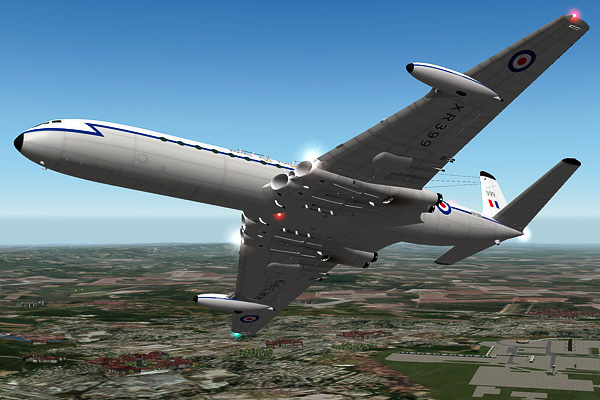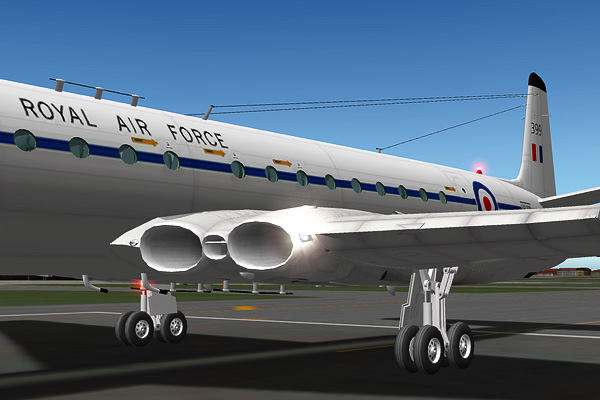Comet C.4C - RAF
16/03/09 10:30

Royal Air Force Transport Command
When the Comet 1 inquiry began, the Comet 2 was already in production, and the larger Comet 3 was in design. The inquiry lead to understandable delays and concerns. The Comet 3 was early enough in its design and development to dovetail neatly into the Comet 4. John Cunningham’s test team was able to certify much of the strenghtened Comet 4 using the Comet 3 prototype, with the result that the Comet 4 was hardly delayed at all.However, the Comet 2 was a casualty. Production was halted while de Havilland decided the best fate for built and part-assembled aircraft; potential customers vanished, either because Comet 2 delivery would be so close to the Comet 4 that they might as well order the larger, more cost-effective aircraft, or cancelled altogether because of the tragedies. Comet 2s that had been upgraded and strengthened were bought by the R.A.F., who suddenly found themselves with the most advanced fleet of jet transports in the world. They were in demand not only from Britain and the Commonwealth, but lent to other nations as well - including the USA.
This lead to a long history of Comets in the Royal Air Force Transport Command, specifically 216 Squadron. As the Comet 2s aged, they placed orders for 5 Comet 4s to R.A.F. specification, known as C.4Cs. The interiors of these aircraft were frequently changed, sometimes between one leg of a journey and the next, from a general transport, perhaps of troops or other personnel (with rear-facing seats), V.I.P configuration when carrying royalty, government ministers, and other national and international dignitaries, or for medical evacuation, with bunks and medical facilities.
R.A.F. Comets were maintained immaculately. When 216 Squadron was disbanded in 1975, due to defence cuts, the Comets were sold to Dan Air, who found they were significantly better kept and more economical than aircraft bought from other airlines. For V.I.P. flights, the aircraft would be polished until they gleamed. However, although they initially had polished aluminium wings and lower fuselage, this quickly changed to pale grey paint, which protected against corrosion, and, I suspect, was easier to “bull up”.
This is just the livery. I have not modelled a new interior, or even rear facing seats – but it will come.

Having hoped it would be a quick job, I realised, to my horror, that the underside of the wings, in-board of the pinion tanks, would have to be handed for the R.A.F., because of the aircraft identification. Commercial airlines leave this blank, so I could use the same texture on both sides. After kicking myself hard for poor planning, I had to spend several hours changing all my templates and the UV map. What a nuisance!

The R.A.F. specified their own instruments and navigation. Again, this is only a livery change, and there will be no changes in the cockpit, yet, although there will be in future. However, there were obvious changes externally, with different arrangements for antennae. These are included in the livery, as you can see.


--
GMM-P (16/03/2009)
blog comments powered by Disqus
